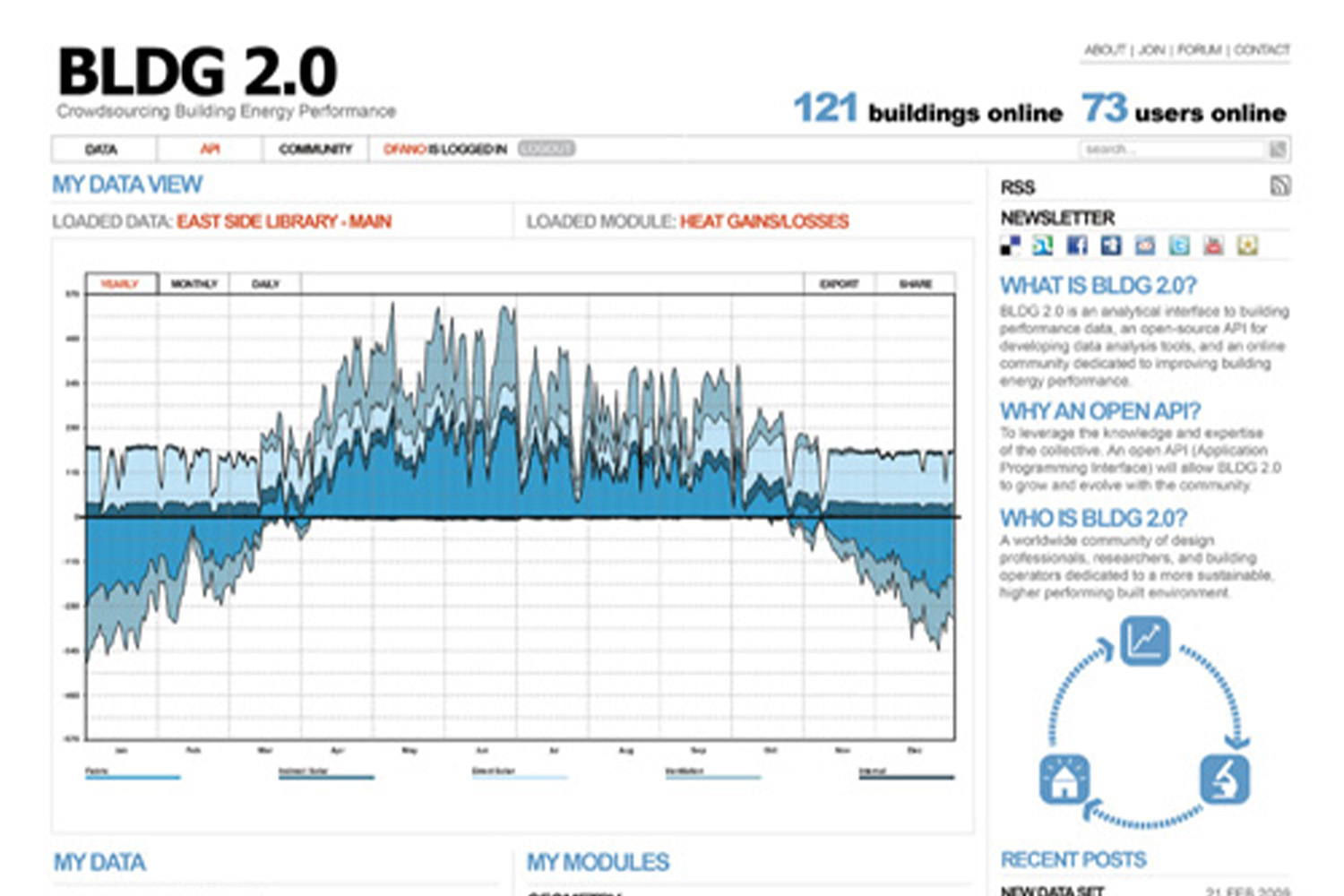BLDG 2.0
Share

Building Performance Data—sounds important, doesn’t it?
Well, it is.
However, it is NOT easy to come by. There is a vast amount of information about the performance of buildings during their life cycle, but the data is scattered, tangled, and incoherent at best. BLDG 2.0 is a research project initiated by CASE, a New York City-based technology consulting firm, to gather building performance data, create useful data sets, and a database with an intuitive, easy-to-use interface that makes it possible for everyone to use the rich data. Finally, the goal of the project is to turn the information over to the community so that users can utilize the data to help in the design and planning process of new buildings.
Inspired by the principles of mass collaboration and collective intelligence, BLDG 2.0 seeks to fill the void between design intent and verified building performance by providing an open-source analytical interface to building performance databases, a collaborative community of experts, and an online marketplace for ideas emphasizing building energy performance and open innovation.
Project Description
BLDG 2.0 will enable community members to share information about how their project’s performance. This will aid in the design of higher-performance buildings. Did you ever wonder how much energy your building uses in comparison with your neighbors (or competitors)? What makes their project more efficient? Do the occupants of your project have ideas of how to use less energy? BLDG 2.0 aims to synthesize all of these into a database of easily understood information.
BLDG 2.0 is reminiscent of Web 2.0 and the concept of “user participation, harvesting knowledge from many minds to make everyone a bit smarter and accelerate the pace of innovation.” In this manner, the building industry parallels crowdsourcing trends of the manufacturing industry as described by Chris Andersen in his article for Wired Magazine: “Atoms are the new bits.”
Microsoft has also launched a similar project, currently in beta testing, called Hohm. On a residential scale, this product compares the energy use of homes. You can easily compare yourself to your neighbors, or your town to surrounding towns. The goal is to save homeowners money with simple changes to their homes based on their location.
Both products are focused on energy and cost savings, but more importantly (and powerfully), BLDG 2.0 is focused on data informing the design of new buildings which will lead to buildings with longer lives and higher performance.